
Fungal Nail Infections (onychomycosis)
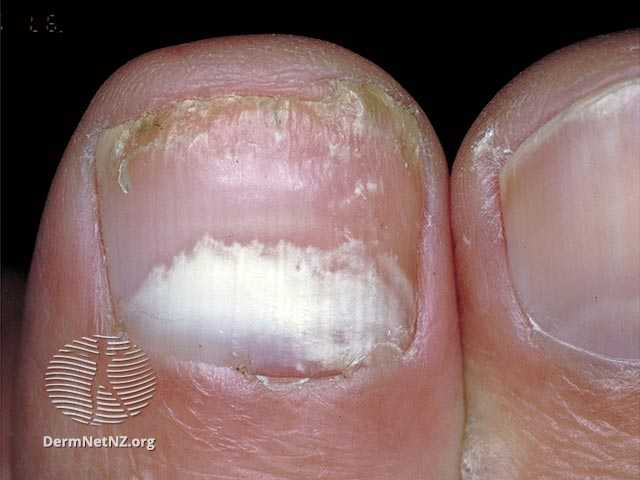
- Yellowish discolouration
- Soft subungual hyperkeratosis
- Spread from distal edge
- Superficial white onychomycosis
Differentiate from:
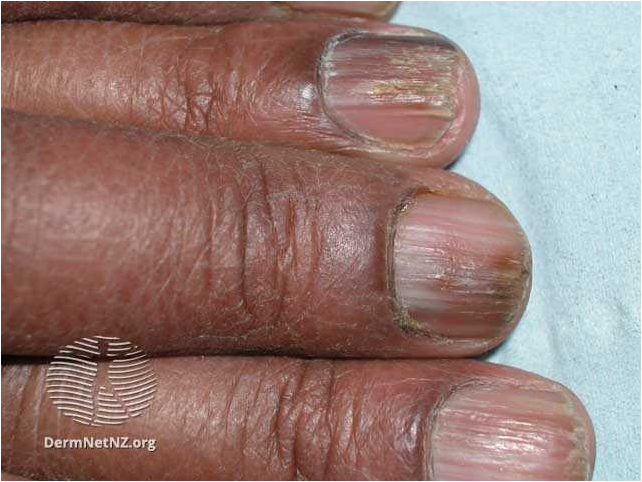
Lichen Planus
Usually a few nails but can involve all (fingernails most commonly affected).
Longitudinal ridges & nail thinning.
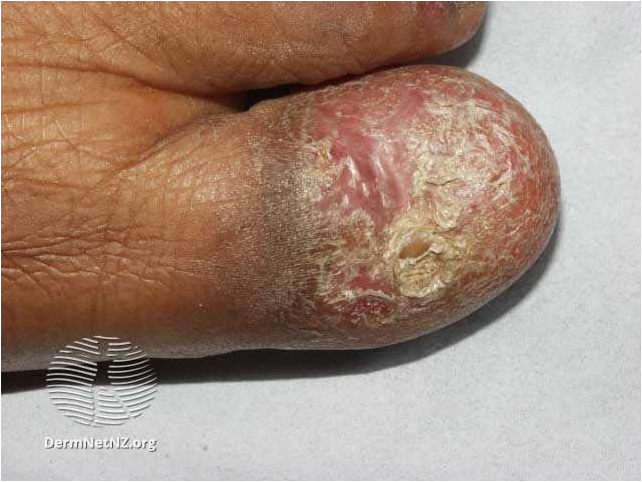
If not treated can result in scarring and permanent nail loss.
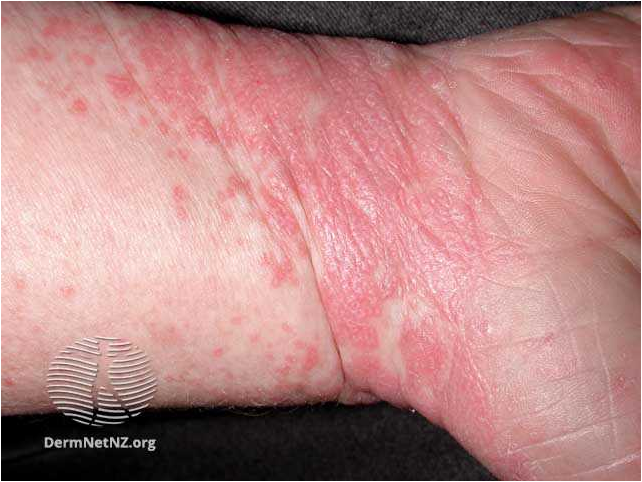
Lichen Planus skin rash-images from Search DermNet | DermNet (dermnetnz.org)
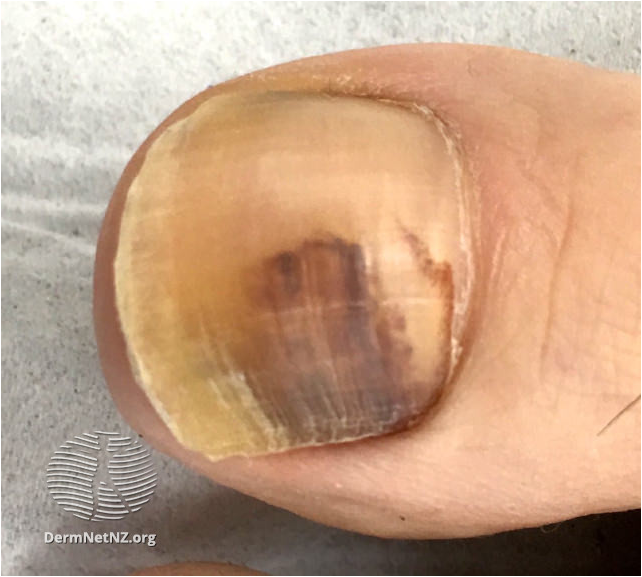
Subungual haematoma
– History of trauma or vigorous physical activity (though may not be remembered).
-Discolouration migrates with nail growth, with clearance of proximal nail bed with time.
– Discolouration is usually red or red/black but not brown.
– No management required.
image from Search DermNet | DermNet (dermnetnz.org)

Chronic paronychia
– Often associated with “wet work” e.g. hairdressing/childcare.
– Nail fold becomes painful, red and swollen.
– Treat with clotrimazole cream four times daily.
– Protect hands with gloves for wet work.
image from Search DermNet | DermNet (dermnetnz.org)

Psoriasis
– Pitting and onycholysis
– Oil drops” and sub-ungual hyperkeratosis.
images from Search DermNet | DermNet (dermnetnz.org)
Many skin conditions can affect nails including benign naevi, melanoma, NMSC and inflammatory conditions such as eczema.
Nail growth can also be affected by medications, illness and systemic conditions, as well as over-zealous manicuring.
All images on this page are sourced from DermNet | Dermatology Resource (dermnetnz.org)
R.C 25-04-24
Dermatology Referral Criteria
- Diagnosis uncertain
- Suspicion of subungual tumour
- Failure of fungal nail infections to respond to treatment
- Potentially destructive lichen planus.
Consider referral to podiatrist
- Toe nail dystrophy secondary to trauma
- Painful psoriatic toe nails
Management
Fungal Nail Infections (onychomycosis)
- Perform mycological examination of nail clippings INCLUDING soft subungual material to detect fungal elements.
- Do not prescribe systemic antifungal drugs without laboratory confirmation of the diagnosis. The decision to proceed in the absence of this lies with the individual clinician.
- No treatment is an option especially in the elderly.
- Terbinafine 250mg od for six weeks for finger and 12–16 weeks for toe nails and review progress. Caution in patients with liver and auto- immune diseases.
- BNF recommends monitoring of hepatic function before treatment and then periodically after 4–6 weeks of treatment—discontinue if abnormalities in liver function tests.
- Itraconazole 200mg bd for one week pulsed monthly for two courses (fingernail) or three courses (toenail) is a second line option.
- Topical amorolfine lacquer for superficial white distal and lateral nail involvement only. Apply 1–2 times a week for 6 months to treat finger nails and for toe nails 9–12 months (review at intervals of 3 months).
Psoriasis
- Treatment of nails is difficult and results are often disappointing. Patients should be encouraged to keep their nails short. The use of nail varnish will not cause harm and can help disguise nail changes
- Distal nail involvement – advise the patient to cut the nail back as far as possible then use topical Vitamin D analogue/potent steroid or topical steroids once a day for a trial period of three months
- Systemic treatment for more widespread psoriasis may improve nail appearance but the risks usually outweigh benefits if using for nails alone and is generally not prescribed..
Link to PCDS Nails guidance
For Patients
Patient Information Leaflets – British Association of Dermatologists (bad.org.uk)
For Health Professionals
Link to PCDS Nail disorders (pcds.org.uk)













